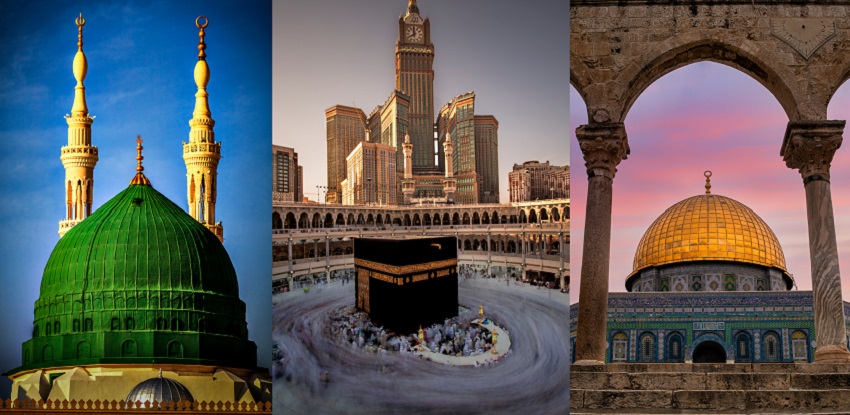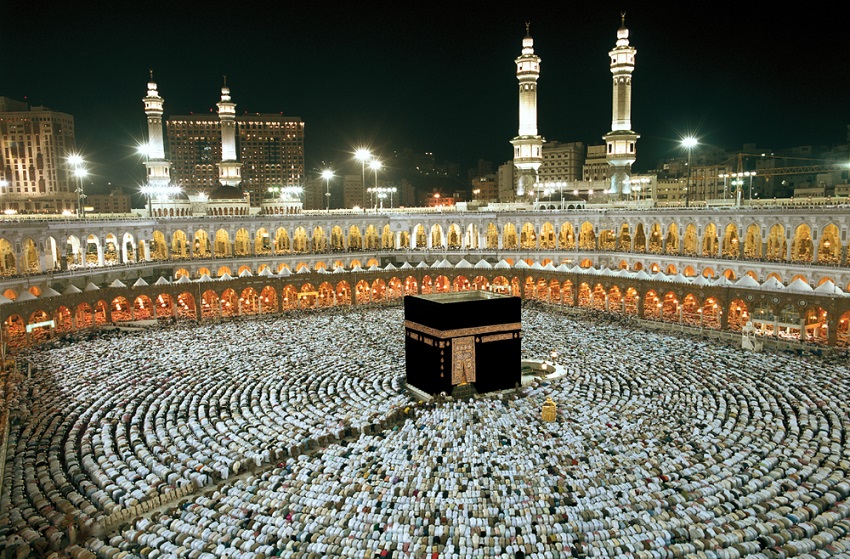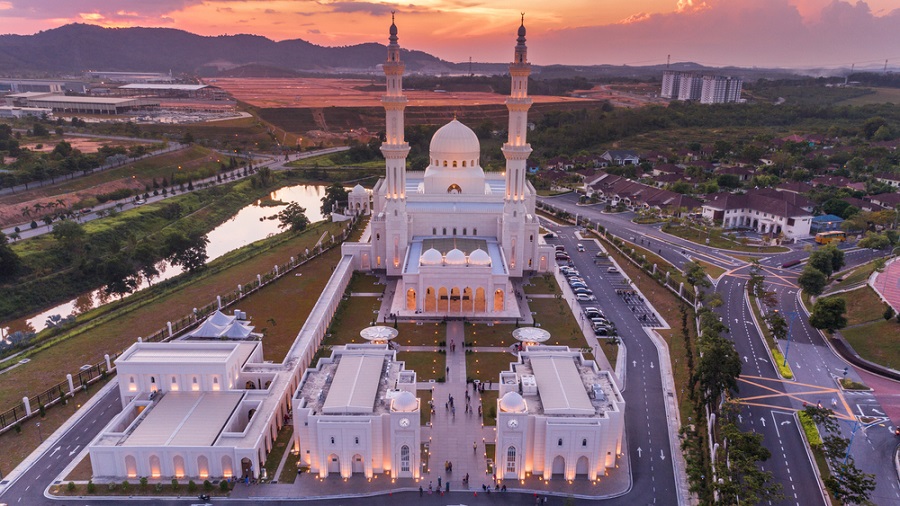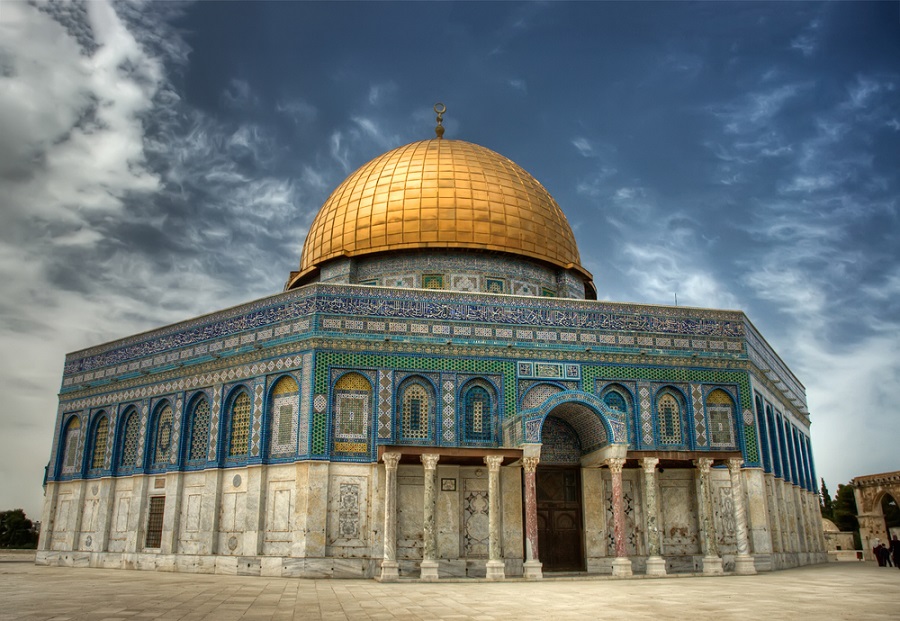The 3 holy mosques tour is a tour to the three holiest mosques of the world, which are – Masjid Al-Haram in Makkah, Masjid Al-Nabawi in Madinah and Masjid Al-Aqsa in Jerusalem. As per Islamic teachings, Prophet Muhammad (PBUH) explained that the journey to these three mosques is the only one that Muslims must prepare for. Considered as the most sacred sites on Earth, the three mosques hold immeasurable significance in the history and culture of Islam. One can make plans for this tour while deciding to perform Umrah.
3 Holy Mosques Tour Significance
There are numerous holy sites that Muslims can visit and see. Especially the ones written in the holy Qur’an are of massive significance to devout Muslims. The 3 holy mosques tour covers the three most important of these places. Islamic traditions and verses in the holy book of the Qur’an reflect the significance of these mosques.
Prophet Muhammad (PBUH) said, “Do not prepare yourself for a journey except to three Mosques i.e. The Great Mosque of Makkah, the Mosque of Aqsa and My Mosque.” – (Bukhari 20:2)
The 3 Holiest Mosques
1. Masjid al-Ḥarām – The first site of the 3 mosques holy tour
Masjid al-Ḥarām is also known as the Great Mosque of Makkah. The name literally means ‘The Sacred Mosque’. For Muslims, it is one of the holiest places to visit and is credited as the world’s largest mosque. During the pilgrimage of Umrah and Hajj, millions of pilgrims gather in this mosque to pray at the holy Kaaba and attain salvation.
As per Islamic belief, the Great Mosque of Makkah was the creation of Prophet Ibrahim (PBUH) along with his son Ismail or Ishmael. Under the orders of Allah, they built both the Kabba and the Mosque. The revered Black Stone is located on the holy Kaaba’s eastern corner. Muslims believe that is the only remaining part of the actual structure built by Prophet Ibrahim (PBUH). Islamic teachings mention that the holy well of Zamzam is a miraculous well. It is believed to have never dried since it was discovered.
Presently, the Great Mosque of Makkah stands covering 356,800 square meters. It includes both indoor and outdoor praying areas. It is one of the most important sites in the 3 holy mosques tour.
2. Al-Masjid an-Nabawi – The second mosque of the 3 mosques holy tour
Situated in Madina, the Al-Masjid an-Nabawi is also known as the Mosque of the Prophet. It is the second-largest and the second holiest mosque in the world. It is the third mosque built in the history of Islam and now serves as the final resting place of Allah’s peaceful messenger, Prophet Muhammad (PBUH). The foundation of the original mosque was laid down by the Prophet (PBUH) himself. It was adjacent to the house where he lived after his migration to the holy city of Madinah in 622 AD. At that time, it was an open air structure that had an elevated dais for the Quran reading sessions. The mosque acted as a religious educational institution, court, and community center.
Apart from the tomb of Prophet Muhammad (PBUH), the Mosque also houses the final resting place for the Rashidun caliphs, Umar and Abu Bakr. The southeast corner of the mosque has special importance. The Green Dome, which was actually the house of Bibi Aisha, now serves as the tomb area of Prophet Muhammad (PBUH).
3. Al-Aqsa – The final site of the 3 mosques holy tour
Situated in the Old City of Jerusalem, the Al-Aqsa Mosque is also known as the Temple Mount. The place is not only sacred for Muslims but for Jews and Christians too. As per Islamic teachings, Al-Aqsa is the second mosque built right after the Masjid al-Ḥarām located in Makkah. Al-Haram Al-Sharif, also referred to as the Noble Sanctuary, is a 3-acre compound area that houses the Al-Aqsa. Here, pilgrims also pay homage at the Dome of the Rock. As per Islamic traditions, this is the structure where Prophet Muhammad (PBUH) is believed to have stepped into Heaven. It is also a source of major conflict between Israel and Palestine.
Suggested Read: 8 Extremely Beautiful And Significant Mosques In Saudi Arabia
Facts one should know on the 3 holy Mosques tour
- With a total mosque area of around 356,000 sq meters, Masjid Al Haram can accommodate more than 4 million pilgrims and visitors at a time. It has 9 minarets with an average height of 292 feets.
- Masjid An Nabawi was the first place to have electricity in the whole of Arabia. Also, the mosque has expanded 100 times its old original area and now can accommodate around 1 million pilgrims simultaneously.
- Masjid Al Aqsa was a dumping ground for a long time and used by Romans to dump their garbage in the area. Later, Umar (ra) cleared the trash from the city and the masjid and also gave the right to refugees to occupy the city once again.
During the 3 holy mosques tour, the mosques can be visited in any order, depending upon where you are starting from. Since two of these mosques are in the Kingdom of Saudi Arabia, pilgrims spend more time in Makkah and Madinah. Flights to these cities are available from all parts of the world. Pilgrims must have valid visas for both Saudi Arabia and Israel.
FAQs regarding the 3 Holy Mosques Tour
Which are the holiest cities as per Islam?
According to Islamic traditions, the holiest cities include Saudi Arabia, Jerusalem, and Damascus. One can find both Makkah and Madina in the Kingdom of Saudi Arabia. Jerusalem houses the Al-Aqsa, while Damascus has the Umayyad Mosque.
How to prepare for the 3 holy mosques tour?
To prepare for the 3 holy mosques tour, one can must book accommodations and flight tickets beforehand, make a packing checklist, form a list of duas, get the necessary vaccinations, research the history of the sites, pack relevant clothes as per religious significance and weather, get comfortable shoes, and make peace with others before leaving - forgive and seek forgiveness.
When was Masjid Al Aqsa built and by whom?
Originally a prayer house, Al Aqsa was built by Umar, who was the Rashidun Caliphate’s second caliph. It was later expanded and rebuilt by Abd al-Malik and then completed in 705 by al-Walid, son of Abd al-Malik.
What is the total capacity of Masjid An Nabawi?
Masjid An Nabawi can accommodate a total of more than 1 million people.
Suggested Read: Life After Umrah: 5 Things To Do Once You Are Back











